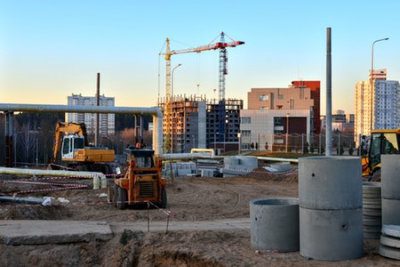
Written By: Robert E. Sheriff, MS, CIH, CSP, President
Updated July 1, 2020
Health and Safety Plans (HASP)
A Recent Requirement: HASP
More and more construction projects contain specs requiring a Site-Specific Health and Safety Plan (HASP). This includes Building Construction, Demolition, Road Construction, and, of course, locations where there is a known—or suspected—hazardous waste or contamination problem (asbestos, lead, soil contamination, groundwater contamination, etc.).
Objective
The overall objective is to evaluate every aspect of the project to predict the hazards faced by the workers at every stage. This involves not just what is known about the worksite including past history—and—hazards—such as soil contamination, but what can be predicted such as demolition of previous manufacturing structures (asbestos, lead, metal, chemical, pesticides). It also requires input from persons knowledgeable in the hazards at each stage of construction (silica, hex chrome, even mold!)
An essential element of any HASP is the Job Hazard Analysis (JHA) that identifies each work activity, the hazards associated with each task, and the protective measures required to protect workers at each stage of the work.
Permit-Required Confined Space Entry is one of those elements adding to the complexity of a HASP. Another is Hot Work, meaning welding.
Chemical usage requiring monitoring and possibly respiratory protection also add complexity. Chemical usage often requires the input of a Certified Industrial Hygienist (CIH) to evaluate potential worker exposure, perform monitoring, and identify situations where protective clothing and respiratory protection are required.
Respiratory protection in itself is an intricate aspect of any HASP since regulatory requirements require initial monitoring, a written program, respiratory selection, physical exam, respirator fit testing, training, and recordkeeping.
Generally, where a HASP is required, there are other hazard control plans required. It is common to have a need for an Environmental Protection Plan to protect neighbors, the air, water, and ground from hazards created and address in the HASP.
Closely linked to an Environmental Protection Plan is a Hazardous Waste Plan addressing each issue as waste collection, waste classification, storage, transport, and disposal.
Finally, the issues of Product Stewardship and Sustainability can be addressed. Issues such as recycling, carbon footprints, alternate products, routes, and proximity of supplies are all elements of a responsible approach to a project or production activity.
Atlantic Environmental, Inc. is well equipped to deal with more complex Health and Safety Plans HASP issues. We may be able to assist you in something that seems to be overwhelming in its complexity. Searching this website, e-mail (info@atlenv.com), a phone call to 973-366-4660, or using our online form is all that is needed.
Our entire team of experts comprises of Certified Safety Professionals (CSP) and Certified Industrial Hygienists (CIH) and many other health and safety licenses and certifications within the environmental industry.
Our primary service areas for Safety and Health Plans Services are New Jersey NJ, New York NY, (New York City), Pennsylvania PA, Connecticut CT , Massachusetts, (Boston) MA, Rhode Island RI, Washington DC, Wisconsin WI, Michigan MI, Illinois (Chicago) IL, Indiana IN, Georgia (Atlanta) GA, Alabama AL, North Carolina NC, South Carolina SC, Texas (Dallas, Ft Worth) TX, DC. We can service most other areas of the U.S. but with some added travel charges.



